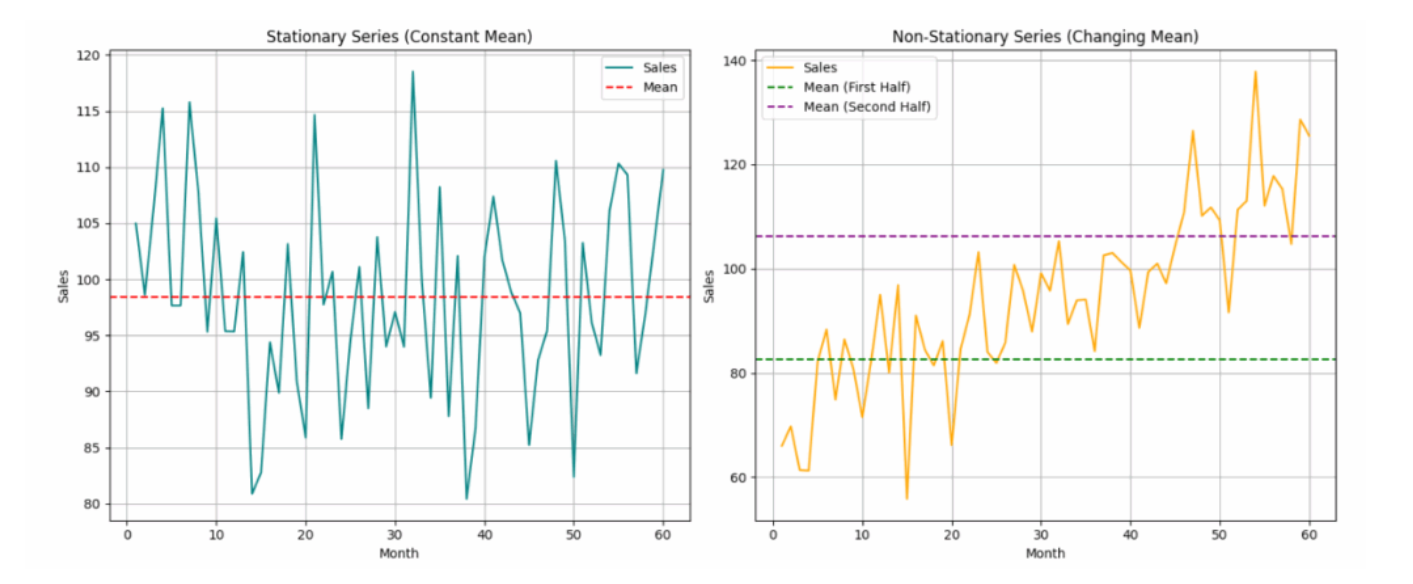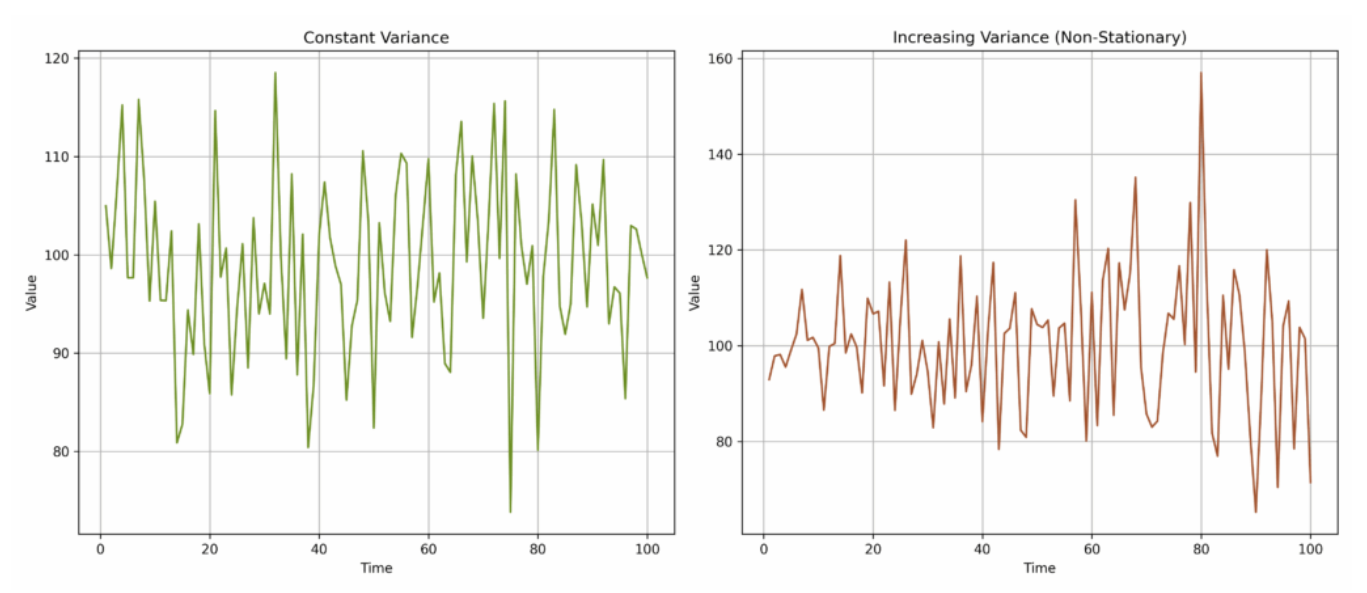A stationary time series is one whose statistical properties do not change over time. Many classical time series models (e.g., ARIMA, SARIMA) assume stationarity. Non-stationary data can lead to misleading results expecially in Time Series Forecasting.
This means the process has the same behavior regardless of when you observe it. Checking a series’ stationarity is important because most time series methods do not model non-stationary data effectively. “Non-stationary” is a term that means the trend in the data is not mean-reverting - it continues steadily upwards or downwards throughout the series’ timespan.
Formally, a time series is stationary if:
- The mean is constant: for all .
- The variance is constant: for all (the spread of data). If the time series goes up and down by similar amounts throughout the series, then it is said to have Constant Variance. More spread
- The autocovariance depends only on the lag , not on the specific time : . If the relationship between values depends only on the gap between them, regardless of when they occur, then there is Constant Autocovariance.
Types of stationarity
- Strict stationarity: The entire distribution of the process is invariant to shifts in time (all moments remain constant).
- Weak (or covariance) stationarity: Only the first two moments (mean, variance, covariance) are invariant. This weaker definition is often sufficient for models like ARIMA.
Examples
Stationary: White noise (mean = 0, variance constant).
Non-stationary:
- Series with a trend (e.g., increasing sales over time).
- Series with changing variance (e.g., volatility clustering in finance).
- Series with seasonality (patterns repeating over time).
Trnasfomration to get Stationarity
Common Data Transformation to achieve stationarity include:
- STL Decomposition
- Log transformation (to stabilize variance)
- Detrending or deseasonalising
Tests for Stationarity
Practical checks:
- An easy way to check for constant mean and variance is to chop up the data into separate chunks.
- Then, one calculates statistics for each chunk, and compare them.
- Large deviations in either the mean or the variance among chunks might indicate that the time series is nonstationary.
- ADF Test & KPSS Test: Augmented Dickey-Fuller test give statistical justification to what our eyes see. If the the p-value is not less than 0.05, we must assume the series is non-stationary.
- Visual inspection with STL Decomposition
- ACF Plots
Related
- Decomposition in Time Series
- One time events (Interventions) be removed (think Covids impact of stock data). See Intervention Analysis.
- Decomposition in Time Series
Resources:

